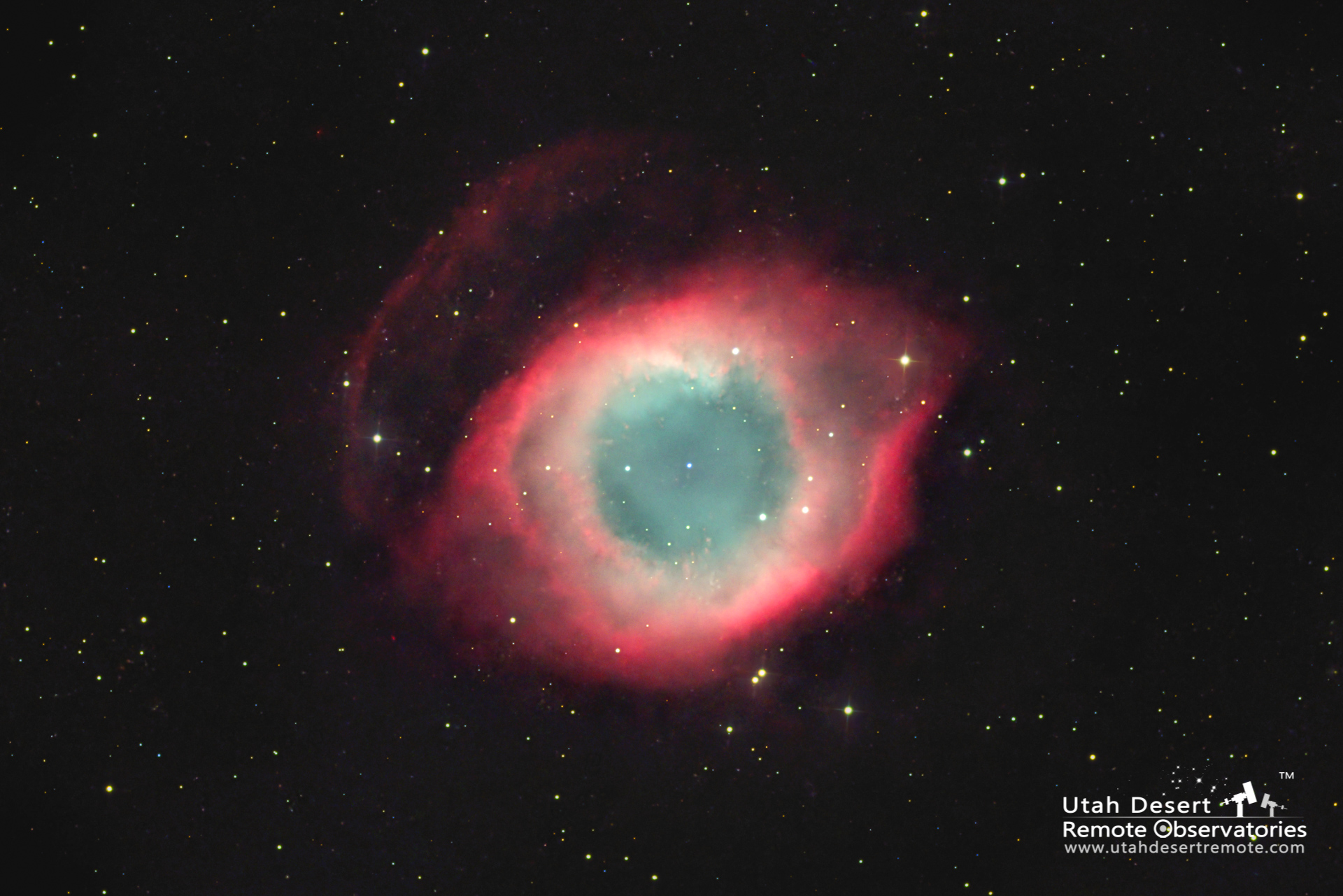What we see and what the camera records can be vastly different. Consider these two versions of the Helix Nebula. Looking through a telescope you’ll mostly see a gray smudge, but a camera can collect light (and color) over time to give us a deeper view of what’s there. The real magic happens when you add specific glass filters that allow the camera to see only certain elements. In this case filters were used for hydrogen, oxygen and sulfur. The filters are referred to as “narrowband filters” since they only pass a very narrow band of color and block every other color.


Narrowband images are always shown in a false color (though I prefer the term “translated color”). The images are captured as simple black and white images relying on the brightness to indicate the presence of the particular element. As astrophotography artists we are free to choose how to color map the image. Ionized hydrogen and sulfur and slightly different shades of red while oxygen is blue-green. Two common color palettes are HOO (where hydrogen is mapped to red and oxygen is mapped to cyan (green and blue) and SHO where sulfur is mapped to red, hydrogen to green and oxygen to blue. The goal is an image that is both pleasing and informative. For this comparison I choose a color palette of HSO where hydrogen is red, sulfur is green (which makes yellow) and oxygen is blue-green.
The most notable difference between the images is the extent of visibility of the gases, especially hydrogen. Ionized hydrogen gas glows in a distinctive dark red color that we can’t readily see by eye and it’s difficult to photograph since it isn’t very bright and it tends to be hidden by nearby brighter tones. By using a narrowband filter we’re able to take a longer exposure that captures just the color of ionized gas which allows us to reveal the actual presence of the gas where we couldn’t see it otherwise.
